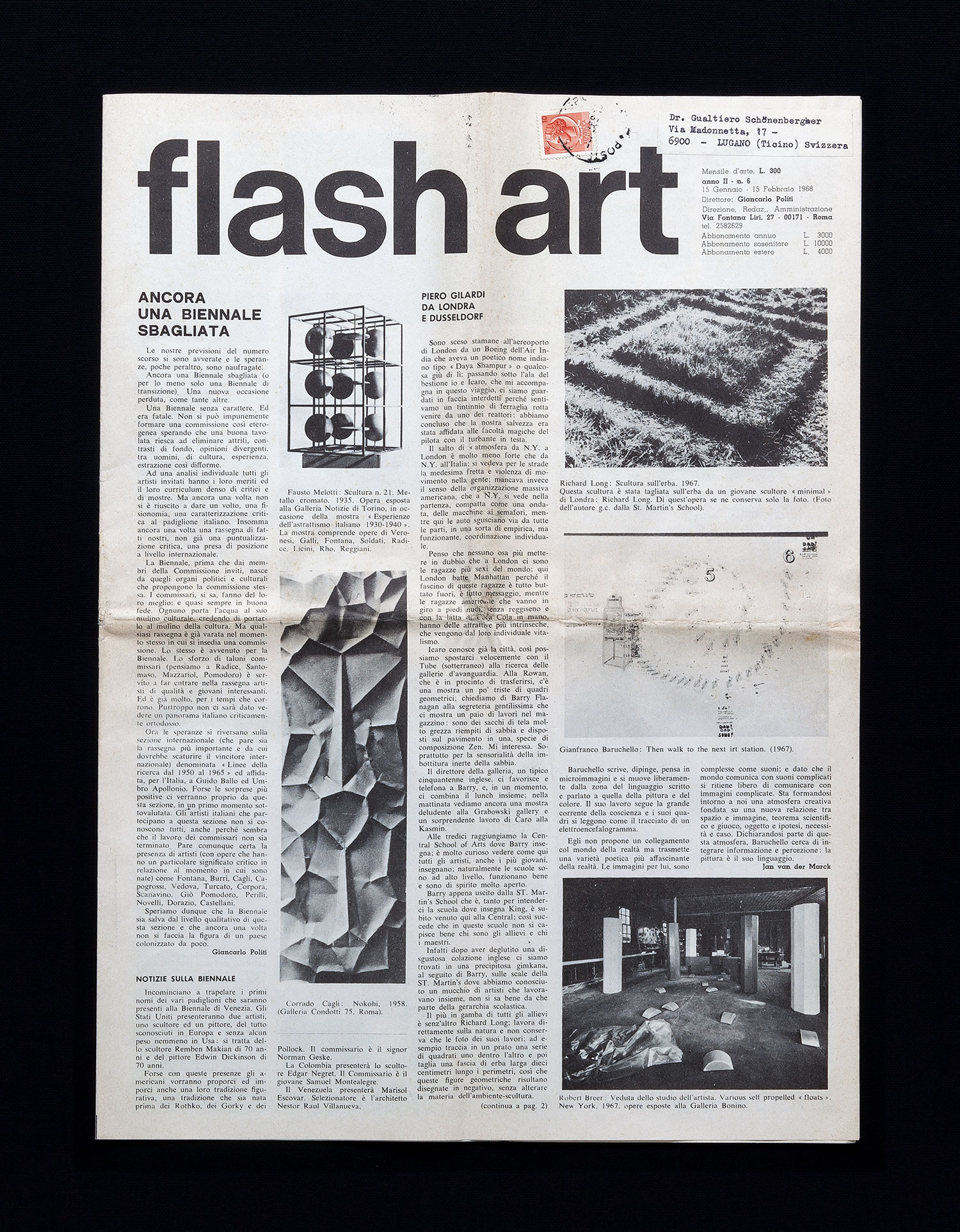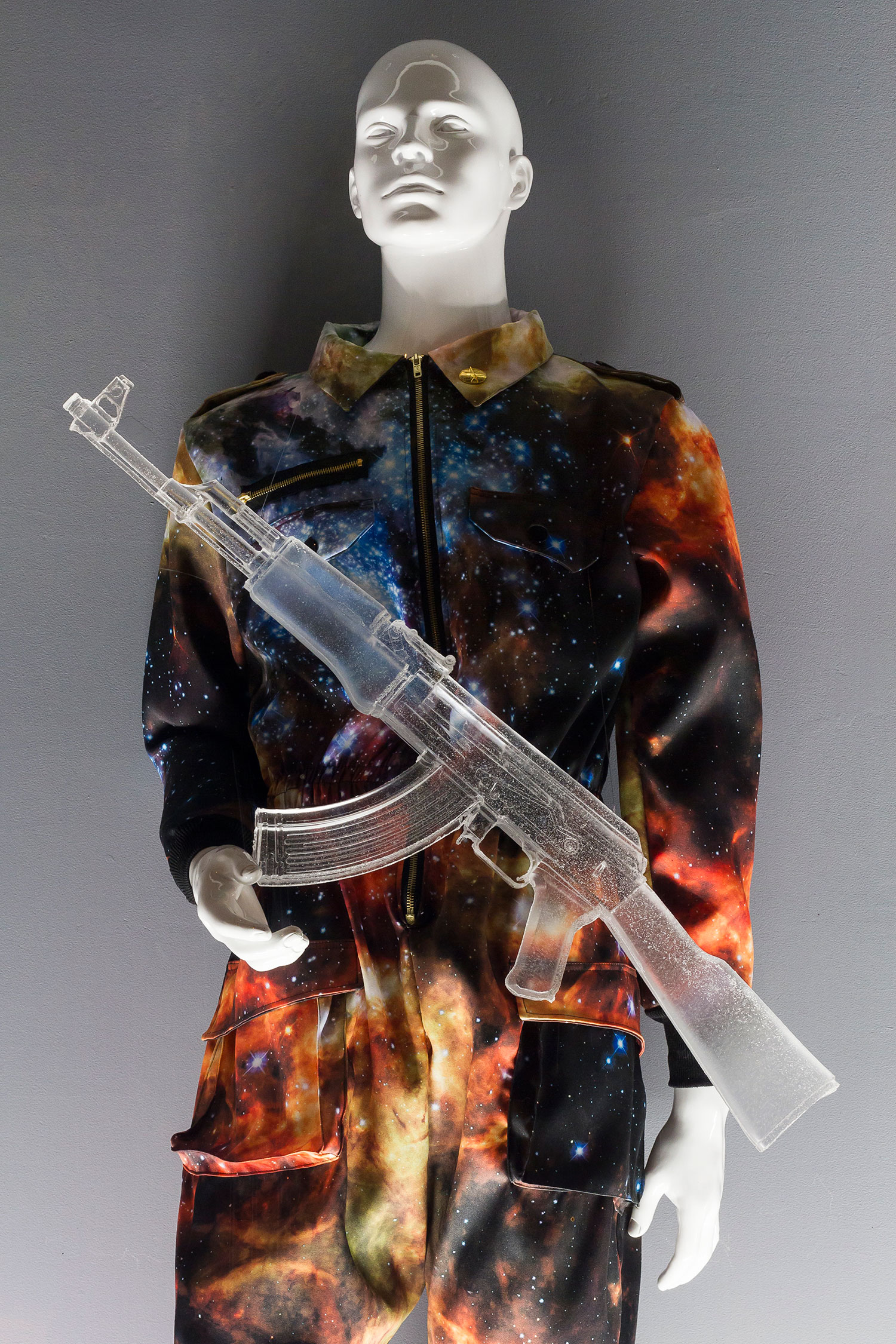 During the early 1980s, Jeffrey Deitch wrote a column for Flash Art titled “Art and Money.” In one such column he specifically explored the formation of artistic networks. Dena Yago reviews Deitch’s claims by reflecting on how collective memory is enacted and recorded.
During the early 1980s, Jeffrey Deitch wrote a column for Flash Art titled “Art and Money.” In one such column he specifically explored the formation of artistic networks. Dena Yago reviews Deitch’s claims by reflecting on how collective memory is enacted and recorded.
The general thesis in Jeffrey Deitch’s “Who Has the Power”[i] is that artists, curators, dealers, gallerists and critics all point fingers at each other as being those who decide what will be shown, lauded and championed within this world. Deitch posits that it is the loose networks of friends, or cliques, that socialize, drink and sleep with one another who ultimately determine the fate of artists around them. His mention of familiar third spaces of the time, specifically the bar Max’s Kansas City, led me to think about how collective memorialization of these sites is buttressed in recent popular memoirs by artists and musicians. Although the question of “who decides” never really lends itself to a monolithic answer, reading Deitch’s essay thirty years after the fact, it does seem that a large part of it is whoever successfully claims a collective history that creates desire for a vanished time and place. This holds true whether it’s an image of a 1970s-era artist hood in New York City or, casting a wider political net, an image of pre-deindustrialized America that so appeals to MAGA sycophants.
A known side effect of benzodiazepines such as Ativan or Xanax is the loss of short-term memory. Many of those who take these drugs, either as prescribed treatment for anxiety disorders or for recreational use, report “losing” parts of their days — a benign example being the common experience of walking into a store and forgetting why you are there in the first place.
These drugs, used to treat generalized anxiety and panic disorders, offer rapid symptom relief that sends you into a dull fog — taking things down a notch without slowing you down. They allow for sustained motion, for instance when used as treatment for a fear of flying: you can take a pill and take the flight. As is the objective for many psychopharmaceuticals, the enemy of these medications is drag and delay in the external world, at the expense of drag and delay within the bodies and minds those who take them. Benzodiazepines in particular produce frictionless citizens, workers, partners, children and parents at the expense of memory. It allows the user to hurtle through anxiety and panic, enduring experiences without acquiring lasting psychological trauma along the way. I hesitate to use the term patients here, because the word implies that those who use the drugs are accessing them through a health care system that provides oversight and pairs psychopharmacology with counseling, when, in fact, frequently these drugs are taken without guided medical treatment.
A 2015 survey revealed that the percentage of adults in the United States who filled a benzodiazepine prescription per year increased about 30%, from 4.1% in 1996 to 5.6% in 2013. Additionally the dosage of benzodiazepine in a prescription doubled. But these pills also often change hands among friends in a low-key barter and trade — Xanax for Adderall, Ativan for beta-blocker. The increased prevalence of Xanax and benzos has entailed a shift in cultural preference from the euphoria and heightened empathy promoted by Molly (MDMA), in favor of mildly dissociative and amnesic effects. This signals a timely collective desire to simultaneously detach while remaining engaged, without the burden of short-term memory. Party with a Xanax, zero out social anxiety and talk to someone — you’ll be left with a lingering feeling (intimate and chill, or harsh and triggering) but you might not have caught their name, who they came with or what brought you together in the first place. Protest on lorazepam, engage in collective action, talk to a stranger — you’ll feel like a part of something bigger than yourself, experience moments of shared empathy and anger, but you might forget to vote.

For two years, during 2011 and 2012, I would take as much as a milligram of lorazepam almost daily, and I remember the sensation of revelation in realizing that the medication made the crippling paralysis of anxiety physiologically and neurologically impossible. But that sensation, along with many thoughts and memories of that period and the lingering years after, stand out as isolated phrases or moments experienced without context: cloistered images, vignettes, fragments of conversation that comprise a hack-job nonlinear narrative film in stills. This piecemeal memory was an expense welcomed in exchange for a combatant against the slowing of time. Much of my anxiety stemmed from the feeling of lagged chronology in a bad situation, a gripping in the chest brought on by the feeling that anything, that hour, day, year, my twenties, were all endless. It was anxiety driven by the childlike fear that the sun would set, never to rise again — by a lack of enough distance or overall perspective to trust that time was indeed a flat circle and that change was possible. The irony of this is that anxiety, the response to an unknown, unidentifiable danger, can be exacerbated by not having a clear memory of that which you could identify as a threat, thus translating anxiety to fear that triggers an immediate physical, rather than largely psychological, response.
A 2002 paper published in the Journal of Psychopharmacology titled “The effects of single-dose lorazepam on memory and behavioural learning” found that “lorazepam-induced impairment in the ability to learn behavioural strategies was possibly due to impaired acquisition of information into long-term episodic memory.”[ii] It causes anterograde amnesia, in which the ability to memorize new things is impaired or lost because information does not transfer from conscious, short-term memory into permanent long-term memory. In the pharmaceutical literature provided when filling a prescription, this anterograde amnesia is disclaimed as an “extreme” side effect without lasting consequences.
Nevertheless, what this produces is bad memory, or memory without context. It produces affect-based memories wherein what is most strongly taken away are the residual vibes of an experience. Not words, images or actions, but sensations of joy, euphoria, longing, loss or desire. A lesson learned from science-fiction films such as Total Recall or, more recently, Westworld and Blade Runner 2049: memories are believed as reliable truths, as lived experiences, when richness of detail and specificity is married to affect and the internalized psycho-trauma that triggers a Pavlovian response. In each of these films, memories are constructed and implanted in the mind of a protagonist: in the case of Total Recall a bored construction worker seeking escape; and in Westworld and Blade Runner 2049 robots and “replicants” whose creators seek to humanize by implanting detail-rich memories that are instrumentalized for a broader sociocultural narrative.
Before Pictures (University of Chicago Press, 2016), Douglas Crimp’s hybrid of memoir, criticism and cultural history, covers the years leading up to the seminal 1977 “Pictures” exhibition at Artists Space. Before Pictures roots art criticism and cultural observation within a personal history, traversing the decades memorialized in the minds of young artists who continue to make the pilgrimage to New York City based on images of bombed-out low-rent Downtown live-work spaces, now replaced by exposed brick, membership-based co-working spaces: live-work supplanted by WeWork. Crimp’s position as critic and art historian differentiates the text’s reliability from that of popular memoirs by musicians Patti Smith and Kim Gordon, Just Kids (New York: Ecco, 2010) and Girl in a Band (New York: Dey Street, 2015) respectively, which memorialize similar eras or attitudes. Crimp roots his criticism in autobiography while simultaneously situating his lived experience within a larger cultural context, all without laying claim, in the way that Gordon or Smith might, to having shaped a given scene. In that sense, Crimp’s appeal is as a critic, rather than artist or musician, who feels that he has to substantiate his observations and experience through a level of critical distance. Before Pictures, Just Kids and Girl in a Band function as historical documents, though the latter two serve as cultural style guides that readers may attempt to emulate, or merely consume, while suspending disbelief that the structural conditions that fostered Smith’s and Gordon’s experiences as artists and musicians living in New York City still exist.

cuts with nude man) (1975-86) Courtesy of Galerie Buchholz, Berlin / Cologne / New York
Reading these tomes, I am struck by their level of detailed recall. A commonality through the memoirs is the repetition and consistency of particular sites, repeated visits to bars, restaurants and clubs frequented by a particular milieu. Before Pictures is structured by chapters titled after the different apartments Crimp lived in over the decades. Places like 12 West, Max’s Kansas City and Danceteria recur as sites where collective memory is enacted and recorded. This recall, without a backing set of data tracking to prove it, requires a reconciliation in memory between how one remembers something feeling, or affective memory, and the details that construct the what, when, where and how. As someone who relies largely on tracking apps or social media to recall specifics of an event that happened a month or two prior, I’m confounded as to how Crimp, Smith or Gordon are able to construct histories and narratives twenty to forty years after the fact.
This recall, though constructed from fragments — from journals, notes, personal and community archives — begs the question of how we will recall and construct a notion of our present. The prosthetic and indexible memory of the internet — check-ins, tags, etc. — allows for a divorcement of affective after-vibe from a substantiated where, when and how. Memory, as it functions for those existing in or influenced by the normalization of a Xanax fog, is summed up concisely, or rather, by an imprecisely concise lyric from Lana Del Rey’s “Love”: “You get ready you get all dressed up / going nowhere in particular / off to work or the coffee shop / doesn’t matter because it’s enough to be young and in love.” Here we see that the memory that lasts is an age and an emotion, which could easily be substituted by any other two descriptors, one physical and one affective. On the way home feeling blessed; in Balenciaga and exhausted; early thirties and in debt; “I’m eighteen, do I have potential?”; twenty-something and disenfranchised; young and in love. This is a construction of immediate short-term memory and, over time, history, via responses to prompts. They are answers to questions like “Tell us what you did today?” “Who were you with?” or “Tag a friend.” A common quip and comment about the ubiquitous “like” is something along the lines of: “How can I dislike this,” or how can I negatively engage? Though instead of a clear-cut disapproval while simultaneously engaging, saying no while doing “yes,” we are given extreme polarities to choose from without shade of nuance, such as love, haha, wow, sad and angry.
Without an imprinting of short-term memory onto long-term episodic memory, an opportunity is opened for suggestibility. There is a reliance on external narratives, whether data-driven or anecdotal, to corroborate a series of events. If I could not remember what I did last weekend I would rely on friends to fill in the blanks, and I would believe them. I would look to a tracking app such as Waze or Moves to figure out where I parked my car. Both cases rely on data sets, one on a locational API (Waze integrates Google Maps, while Moves utilizes FourSquare’s API), the other based on shared experience and witness. In both cases, I would be augmenting my lack of short-term memory with third-party supporting information. The plot-driving anxiety of Total Recall, Westworld and Blade Runner 2049 is that these memories cannot be trusted. As most dynamic characters are motivated by past traumas and events, if these events are inscribed rather than experienced, the subject becomes untethered and dissociated from their actions and motivations. Without the imprinting of short-term memories, a figuratively or literally Xanax-fogged public relies on the memories provided by data: as it exists via social media; and as outlined by narrators who marry affect and historical data within memoirist histories that we can easily buy into. This is why we can walk down city streets convincing ourselves that a past time is still present, or we can walk away from an experience with nothing but affect, leaving details at the door.




